As engineers making state-of-the-art designs, it appears as very clear that assessing the dynamics of complex structures is a critical step in the design process. As structures are submitted to dynamic loads, we have to ensure their dynamical properties will allow them to not only resist to, but keep highest performance, while submitted to various vibrations. This has been well understood and since the 1960s, tools and techniques have been developed to study structures and prevent catastrophes from happening.
These techniques belong to two distinct while connected fields of engineering: Experimental modal analysis for prototype testing and Finite Element Analysis (FEA) for virtual prototyping. They have allowed the design of modern structures such as airplanes, cars, trains, satellites, and so on. Today, they are prevalent in most mechanical engineering industries and are a cornerstone of our technical capabilities.
Experimental Modal Analysis
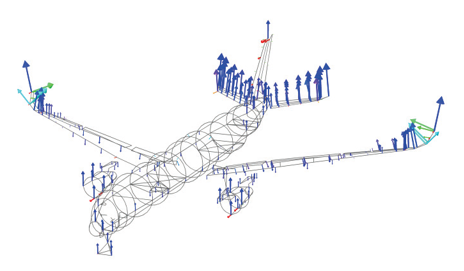
Finite Element Analysis
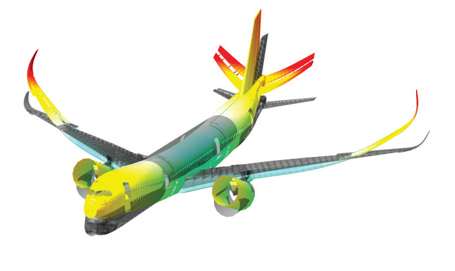
AIRBUS A350XWB Govers et al., ISMA 2014.
The appeal of these techniques comes from the interesting discovery that any structure’s dynamics can be predicted and understood based on a few of its intrinsic properties. These properties are the modal parameters: the natural frequencies of resonance, the corresponding mode shapes and the damping ratios. We understand easily that having a clear set of modal parameters is paramount for the design teams, conveniently the current assumption is that these parameters don’t change: whatever the conditions applied to the structure, the natural frequencies and the mode shapes will not change. This is a consequence of the so-called linearity assumption.
By nature though, all vibrations are nonlinear. The linearity assumption was needed to develop techniques and tools of manageable complexity to solve engineering challenges. Current designs are forced into this linearity assumption through design margins and limitations.
Nevertheless, current constraints in terms of efficiency improvement, eco-friendly solutions and cost reduction lead engineers to seek innovative designs, to reduce these safety margins, and to re-think their structures. Once designs are stretched, nonlinearity tends to appear. For electric cars this might mean micro impact and friction between the different elements of a battery pack, for airplanes this could be the friction between the engine blades and the casing, and so on. These phenomenon are virtually everywhere. Here are a few examples of common sources of nonlinearity:
Joints, bolts, gaps, etc..
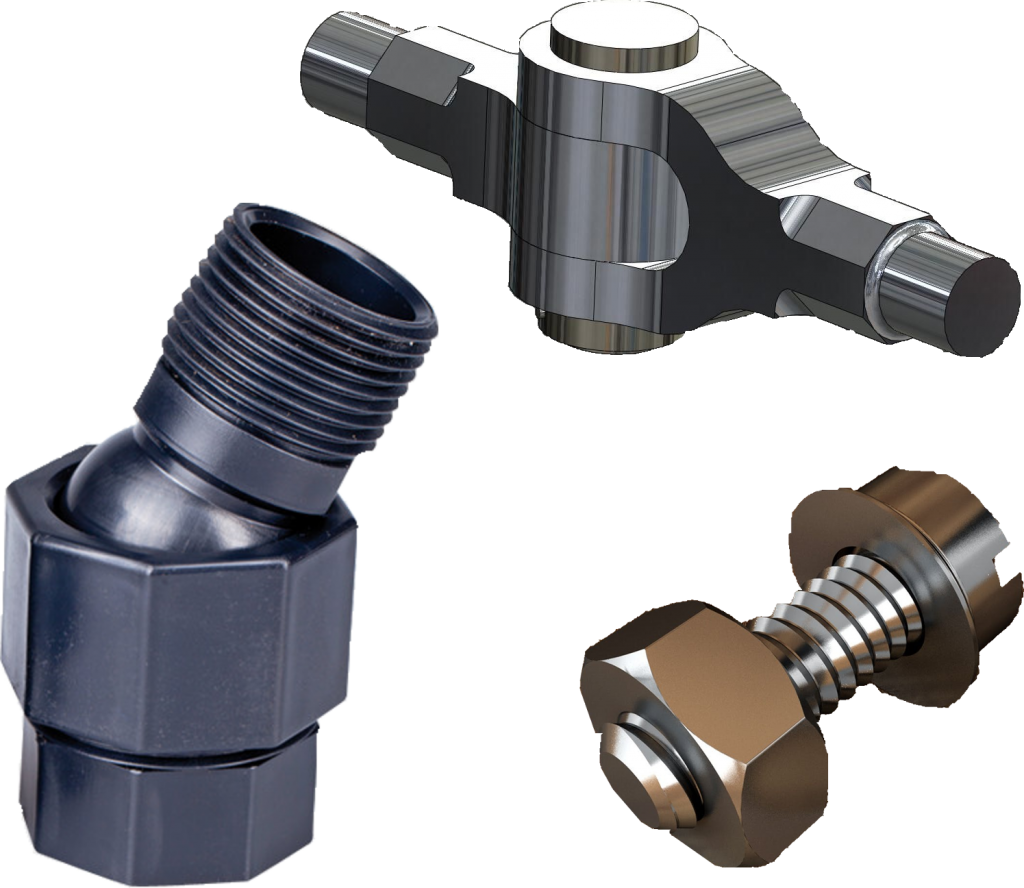
Friction and contact
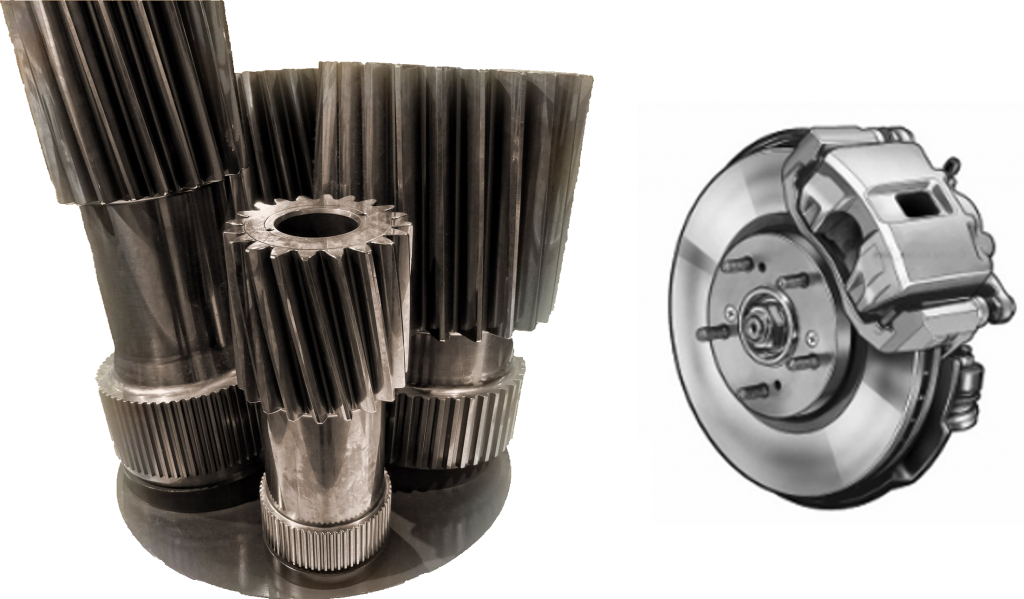
Local materials
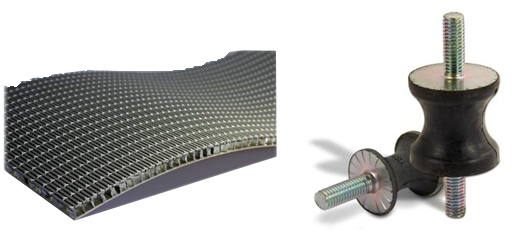
The main question is whether it is important to predict them, and why. In some circumstances nonlinear effects are simple enough to be safely ignored and linear assumptions hold. In other cases nonlinear effects matter either because of the complexity they generate or because of their magnitude. These effects, if not predicted properly, will impact the structure throughout its useful life. By being unable to pass certification test, as can be the case for satellite, or by suffering accelerated wear and tear leading to increased maintenance cost and environmental impact, as can be the case for aircraft or car components. More simply, this can also mean the inability to validate promising designs and the necessity to revert to conservative ones, hindering technological advancement.
"If we understand nonlinearity, we will be able to provide the designer with a better understanding of our structure, hence saving time and cost. Additionaly, taking advantage of this nonlinear behavior in our structure can actually be beneficial for its performance."
Overall, the main effects of complex vibrations and of non-linearity are a decrease in efficiency and loss of design performance. These trade-offs originate directly from the lack of tools available, leaving the engineers puzzled and abandoned to themselves to handle these situations.
Our technology, through software, engineering services or training, assists test and simulation engineers in several ways. The first is in assessing the importance of nonlinear phenomenon in a structure by analyzing traditional test data in innovative ways. If this step reveals substantial nonlinearity, our tools then allow the engineer to locate its source and to understand it in depth, to be then able to integrate the identified nonlinearity in a new model and to use it for simulation purpose. Through this process, the nonlinearity moves from an unknown and dangerous phenomena to a well understood, predictable and normal dynamical behavior.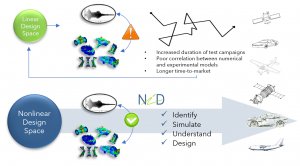 The end result being that the engineering team can push their designs to new height without having to fear entering the nonlinear vibration realm.
The end result being that the engineering team can push their designs to new height without having to fear entering the nonlinear vibration realm.
Compared to existing commercially available offering, our solution is truly unique in the sense that it allows accurate nonlinear model updating as well as nonlinear modal analysis. These two features are simply unavailable through other offerings and are key to mastering nonlinear vibrations. Importantly, while our software is dedicated to nonlinear vibrations, our expertise allows us to tackle many types of vibration challenges not limited to non-linearity. In case of need do not hesitate to contact us to discuss challenges you might be facing.

